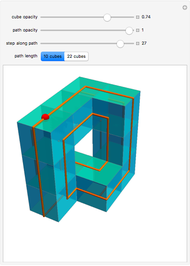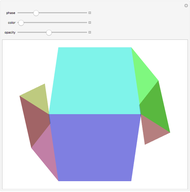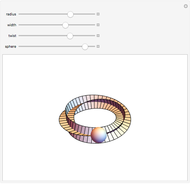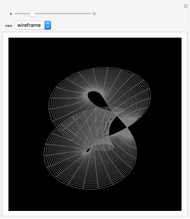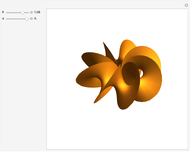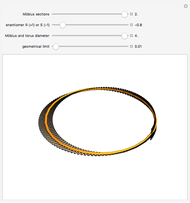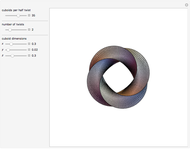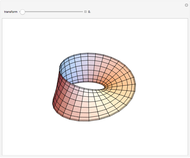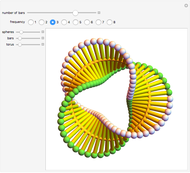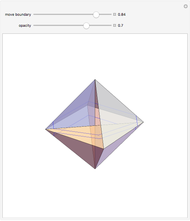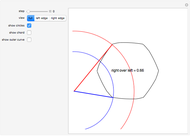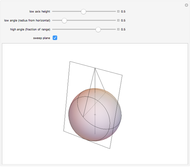Deforming a Möbius Band with a Triangular Boundary

Requires a Wolfram Notebook System
Interact on desktop, mobile and cloud with the free Wolfram Player or other Wolfram Language products.
A Möbius band with triangular boundary was described by Tuckerman [1]. This Demonstration shows a translucent model of it with a dark, thick boundary line. You can continuously deform the boundary in the band until it doubly covers a central loop.
Contributed by: Mark D. Meyerson (February 2013)
Suggested by: Mark E. Kidwell
After work by: Bryant Tuckerman
Open content licensed under CC BY-NC-SA
Snapshots
Details
The Möbius band is the most well-known nonorientable surface. However, it is not as well-known that it has a nonsingular polyhedral embedding in Euclidean space with a triangular boundary. This embedding consists of six of the equilateral triangular faces from an octahedron and three interior right triangular pieces, one twice the size of the other two. We show how to continuously deform the boundary triangle in the Möbius band into a central loop, covering it twice. The snapshots show the starting position, an intermediate position, and nearly the final position, with the curve about to go over itself.
Reference
[1] B. Tuckerman, "A Non-Singular Polyhedral Möbius Band Whose Boundary Is a Triangle," The American Mathematical Monthly, 55(5), 1948 pp. 309–311. www.jstor.org/stable/2305482.
Permanent Citation
"Deforming a Möbius Band with a Triangular Boundary"
http://demonstrations.wolfram.com/DeformingAMoebiusBandWithATriangularBoundary/
Wolfram Demonstrations Project
Published: February 28 2013






